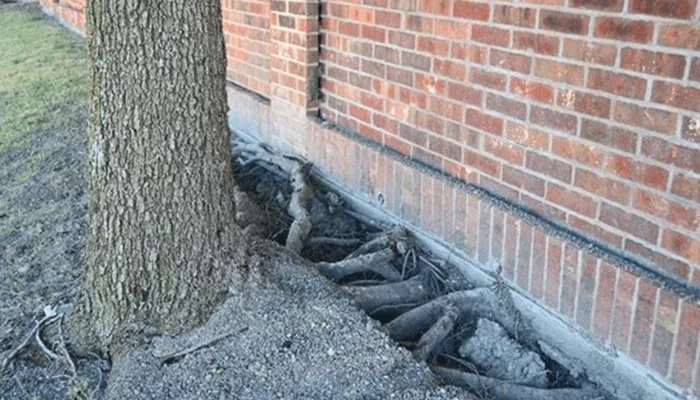Introduction
The task of pruning shrubs used to scare me – there seemed to be so many rules, how could I remember them all? What if I messed up and killed the plant or maimed it forever? Have you ever heard of Plant Amnesty? Yeah, I was worried one of my shrubs would end up on the front page under their tagline, “working to end the senseless torture and mutilation of trees and shrubs.”
Torture and mutilation? Whew-I just decided it was easier to let the plant grow without any interference from me! The problem, though, is that most flowering shrubs look much better and flower more with some basic pruning. Which I soon figured out as I was faced with out-of-control shrubs and few blooms.
When I started regular pruning, I realized that there was nothing really to be afraid of – as long as I didn’t go crazy, it was hard to hurt shrubs permanently. And it was pretty easy to see that pruning allowed for lots of new growth.
Plus, I learned that you can actually prune at almost any time of the year (a light pruning, that is) without hurting the plant – it may lose some blooms, but it’s better to have it pruned some than not at all. This was important for my pruning confidence, because I never seemed to be able to prune at the correct time.
So if you are wondering why, when, and if to prune, or lacking confidence like me, I want to encourage you to go for it–your shrubs will thank you with new growth and blooms!

Why Prune Our Shrubs?
The reasons to prune are pretty clear–we need to prune in order to:
- Promote plant health, making room for new growth and riding plants of dead growth
- Encourage flower and fruit development
- Improve plant appearance
- Control plant size and shape
There are some general, regular pruning steps that need to be done with all shrubs, and then there are some seasonal guidelines for specific types of shrubs based on bloom time.
But again, if you’ve got a summer-bloomer that wasn’t pruned, and it’s June – go ahead and prune just for looks and to remove any dead parts.
It’s better to give a light pruning at whatever time you can rather than not at all – just do what you can to enjoy your shrubs!
General Pruning Tips
1. Use good, sharp pruners and trimmers.
No matter the type of pruning, you’ll want the correct tools for the job – and you’ll need them to be sharp and strong.
Over the years, I’ve used everything from cheapo bypass pruners to more expensive classic Felcos. Now I fall somewhere in the middle with something like Fiskars pruners – there’s a lot less stress for me if I forget my pruners out in the rain when they didn’t cost $50+!
I used to only have bypass pruners, but when I discovered tools like garden scissors and snips I realized that it’s important to have other things for jobs like cutting twine or plastic and smaller pruning jobs like tomatoes as well as harvesting things like basil and cut-and-come-again lettuce. That saves the blades on your good bypass pruners for bigger pruning tasks.
Here are some that I’ve used and liked over the years:
- Fiskars Power Gear2 Pruners
- Felco Bypass Pruner
- Garden Shears
- Micro Tip Pruner
2. Remove dead, diseased, or damaged stems.
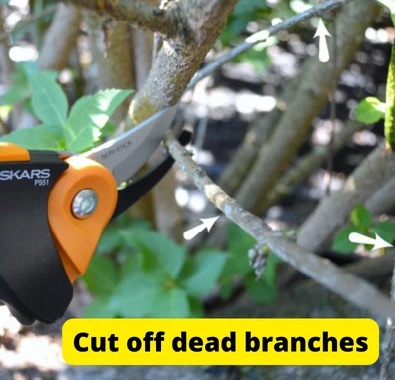
This is needed not only for looks, but also to detract insects and prevent diseases. I’ve found this really can be done at just about any time of the year on any plant to keep them looking good.
3. Remove any dead tips or old flowers back to new growth.
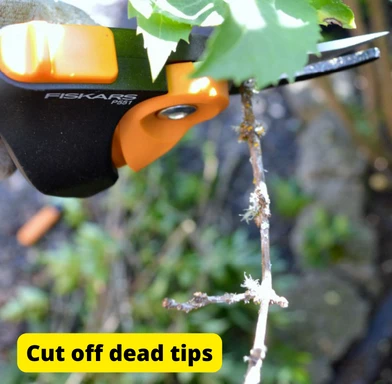
Sort of like #2, but just for the tips of branches where you see dead growth. Again, this can be done at any time, and you won’t lose blooms, since you are cutting back to new growth.
4. Remove any crossing branches.
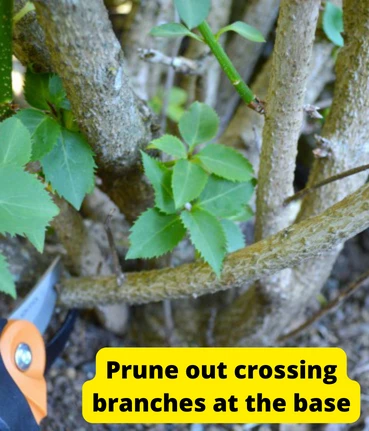
This allows more air and light to the plant, allowing for new growth (plus, it just looks nicer). Also remove any “water sprouts” which are vigorous upright growing shoots that form on trunks or side branches, and “suckers,” the shoots that develop near or below the ground.
5. Remove some of the oldest shoots all the way to the ground on well established plants.
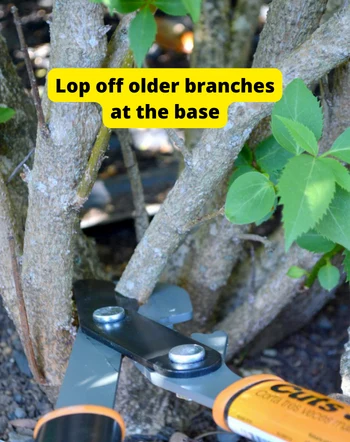
This keeps spring bloomers flowering vigorously and allows younger stems to grow and bloom. You will most likely need a strong set of loppers for this job, as the branches will be thicker.
Seasonal Pruning Guide

Spring Blooming Shrubs: prune after blooming
Shrubs that bloom in early spring on last year’s growth can be pruned in the month or two after they finish blooming, like the forsythia pruned in early May seen above. This hadn’t been pruned in a few years, didn’t bloom well, and it was full of long branches that only had a few leaves at the tops. After pruning, you can see that there is a lot of new growth that will now have a chance to grow and bloom next year.
Other spring bloomers include:
- azalea
- lilac
- magnolia
- early blooming spirea like ‘Bridal Wreath’
- rhododendron & azalea
- climbing and old garden roses that bloom only once
Summer Bloomers: prune in winter or early spring
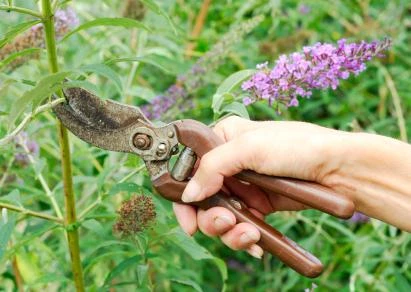
Plants that bloom in summer, like the butterfly bush (buddleia) shown above, produce their flowers on new growth. You can prune them in winter though I find it easier to prune in spring when they start producing new growth, since you can see the live growth to cut back to (you can even cut them to the ground in late winter, and they’ll still bloom that same summer).
Other summer blooming shrubs include:
- potentilla
- crape myrtle
- shrub roses
- late-blooming spirea
- rose of Sharon
- repeat-blooming roses (prune mostly to shape or to remove winter-damaged canes – if overgrown, cut back in early spring)
- and my favorite, hydrangeas, which deserve a section of their own:
Hydrangeas
Hydrangeas are the queen of summer and fall gardens, providing months-long interest with little maintenance. There are a few different varieties – here’s a general pruning guide for each:
- Old Fashioned mopheads, lacecaps & oakleaf bushes bloom on old wood – wait until midsummer to prune, or you’ll remove this season’s bloom.
- Paniculata hydrangeas like PeeGee, Limelight and Annabelle bloom on new wood, so you can prune any time other than right before they bloom (typically buds start blooming in June)
- The new Endless Summer hydrangeas bloom on BOTH new and old growth, so you can prune them whenever you want.
Shrubs Grown For Foliage: prune winter, spring, or summer
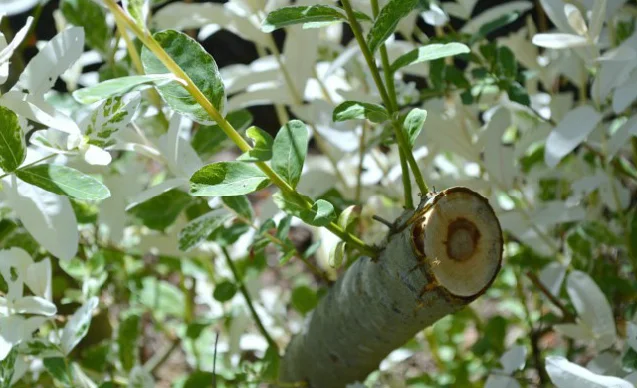
Shrubs that are grown for foliage like the dappled willow above can be cut back almost anytime except in late autumn, since it spurs new growth which may be damaged by winter. To do major pruning, like I had to do on the willow, it’s best to cut the shrub back when it is dormant in winter or just as new growth occurs in spring.
Many of them, especially evergreens like boxwood, should be sheared with hedge trimmers. No need to go overboard, just a light shaping to keep the branches from flopping is sufficient.
Other foliage shrubs include:
- evergreens like Otto Luykens laurel and arborvitae
- barberry
- burning bush
- redtwig dogwood
- ninebark
- smokebush
- sumac
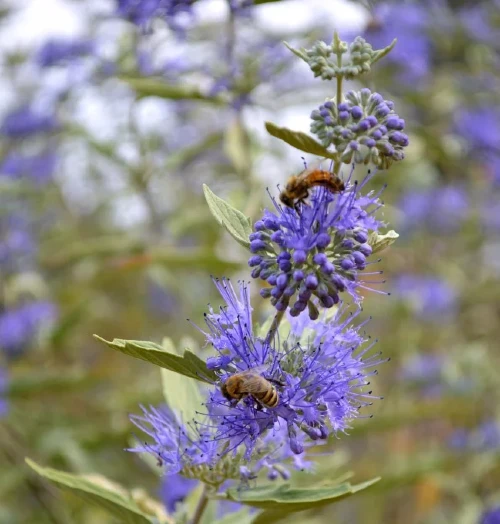
Fall Blooming Shrubs: prune late winter or spring
There actually aren’t many shrubs that bloom only in the fall (most of our fall blooms are from summer bloomers like hydrangeas and roses that continue to bloom into fall) but those that do are treated like summer-bloomers, blooming on new wood and pruned in spring.
Fall bloomers include:
More To Discover
- blue mist shrub/bluebeard (shown above) Note: needs image added
- Beautyberry
- summersweet
- hibiscus (some varieties, like Confederate Rose)
Conclusion
Don’t fear pruning your shrubs anymore! Use this guide to help you keep all of your shrubs happy, healthy and producing gorgeous foliage and flowers for years to come.
And don’t forget to download our free 8 Steps To Your Easiest Garden Ever. It’s a handy checklist in PDF format for easy printing.












